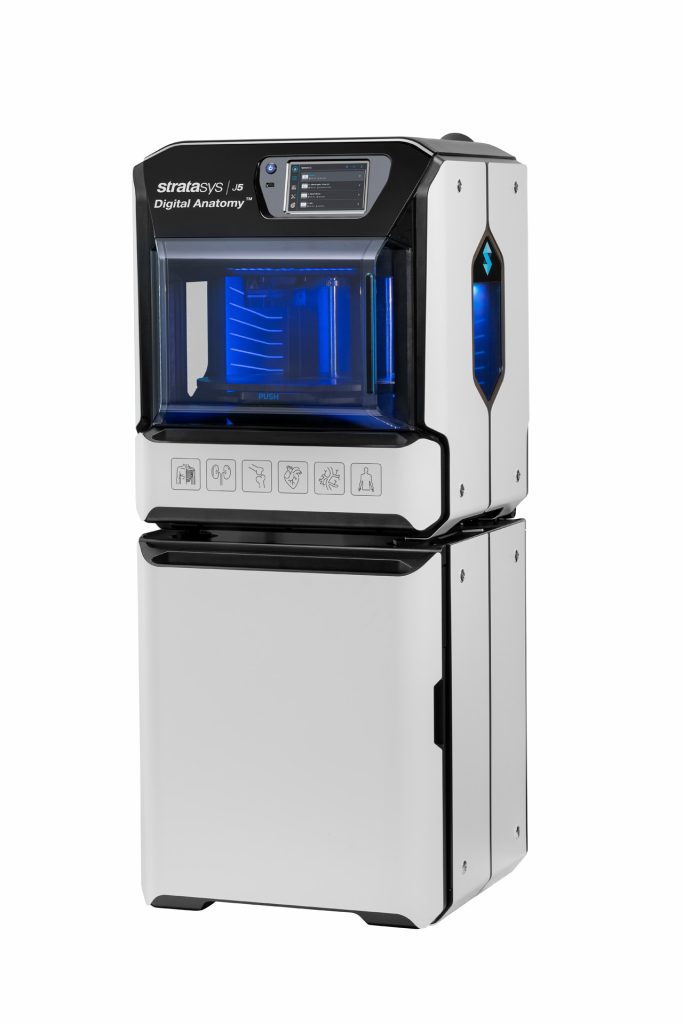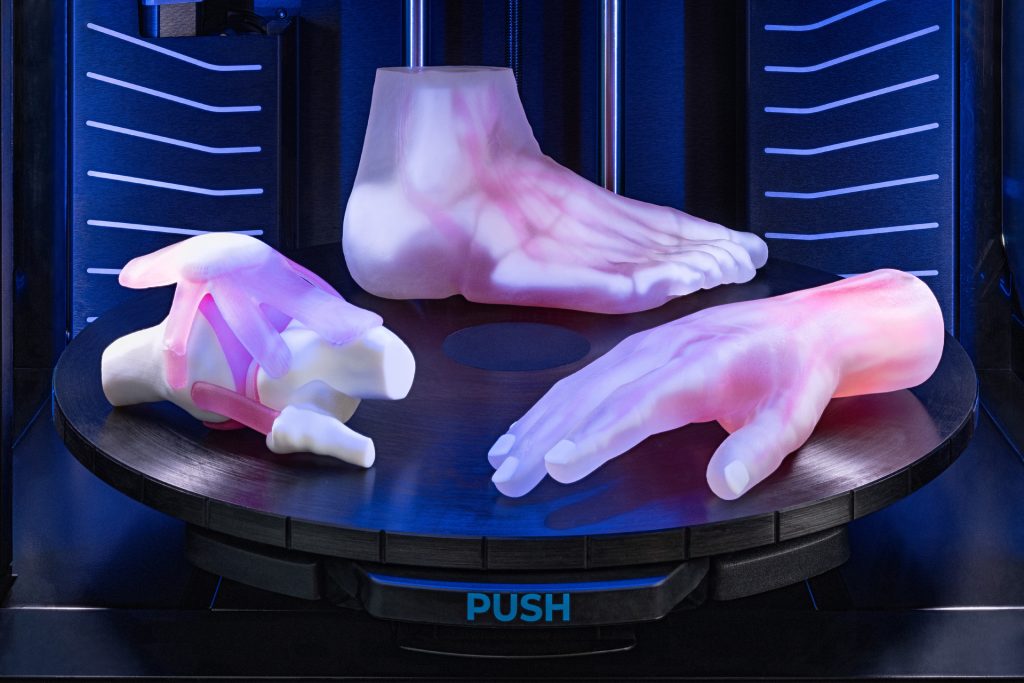3D printer manufacturer Stratasys has announced the launch of its new J5 Digital Anatomy 3D printer for the medical market.
Set to be unveiled at RAPID + TCT 2024 on June 25th, the new system is designed to meet the growing demand for affordable and accurate anatomical models.
The new 3D printer is targeted at hospitals, medical device manufacturers and research institutions. According to Stratasys, J5 Digital Anatomy seeks to improve patient outcomes, increase the efficiency of operating procedures and accelerate the market availability of anatomical products.
Erez Ben Zvi, VP Medical at Stratasys, claims the new 3D printer offers a user-friendly interface and compact footprint. This design will reportedly increase accessibility to additive manufacturing and advanced anatomical modelling for medical institutions.

New Stratasys medical 3D printer
Stratasys’ new J5 Digital Anatomy 3D printer is designed for the production of realistic, patient-specific anatomic models.
The medical devices can be used for preoperative planning and reduce surgical planning time and costs. According to digital services company Ricoh, 3D printed anatomical models can enable operating time savings of 62 minutes and a 7.8% reduction in operative time.
The models can be personalized to perfectly match the patient anatomy, enabling them to improve communication between medical staff and patients.
According to Stratasys, the J5 Digital Anatomy is easier to use than other medical 3D printers on the market. It also boasts a small “office-friendly” footprint and a low Total Cost of Ownership (TCO). This makes it well-suited to institutions with limited budgets and workspace availability.
The company claims that its new offering can 3D print models with biomechanically accurate materials. As such, the parts mimic the feel and behavior of human tissue, bone structures and blood vessels.
Their life-like haptic feedback reportedly enables more realistic surgical preparation for suturing, incision, and screw insertion procedures. The models are also said to accurately reflect real tissue when viewed with medical imaging devices, such as X-rays. This reportedly makes the J5 Digital Anatomy 3D printer an accessible medical training resource and teaching tool.
The new medical 3D printer also reportedly offers high accuracy and repeatability, facilitating rapid iterations in medical device development. Stratasys claims that this could reduce the need for animal testing and shorten the time it takes for products to launch to market.

3D printing enhances anatomical models
The medical industry is seeing increased adoption of 3D printing is a growing technology for the production of accurate, patients-specific anatomical models.
Earlier this month, Ricoh launched RCOH 3D for Healthcare, a new point-of-care medical 3D printing facility. Based at Atrium Health Wake Forest Baptist, it provides clinicians with direct access to development, design and manufacturing capabilities for FDA-approved anatomic models.
The company claims that its on-site additive manufacturing capabilities will reduce operating times, lower medical costs, optimize diagnostic support, and overcome FDA-compliance concerns.
In the future, Ricoh plans to open additional Point of Care medical 3D printing facilities, with Gary Turner, Ricoh USA’s Managing Director, outlining a vision to increase accessibility of patient-specific anatomic models for surgeons.
Elsewhere, rapid prototyping service provider Laser Modelling Israel (LMI) has previously 3D printed anatomical models to aid surgeons in a complex segmentation surgery for conjoined twins. The intricate 3D models were fabricated using HP’s Multi Jet Fusion (MJF) technology and were used by surgeons for practice before the surgery.
3D printed on the HP MJF 4200 using Pl12 and CPU materials, the head models were designed to be connected by magnets. This allowed the practitioners to simulate the surgical removal procedure as realistically as possible.
Register now for AMAA 2024 to hear insights from industry experts on additive manufacturing in aerospace, space, and defense.
Want to help select the winners of the 2024 3D Printing Industry Awards? Join the Expert Committee today.
What does the future of 3D printing hold?
What near-term 3D printing trends have been highlighted by industry experts?
Subscribe to the 3D Printing Industry newsletter to keep up to date with the latest 3D printing news.
You can also follow us on Twitter, like our Facebook page, and subscribe to the 3D Printing Industry Youtube channel to access more exclusive content.
Featured image shows anatomical models 3D printed on the new J5 Digital Anatomy 3D printer from Stratasys. Photo via Stratasys.


